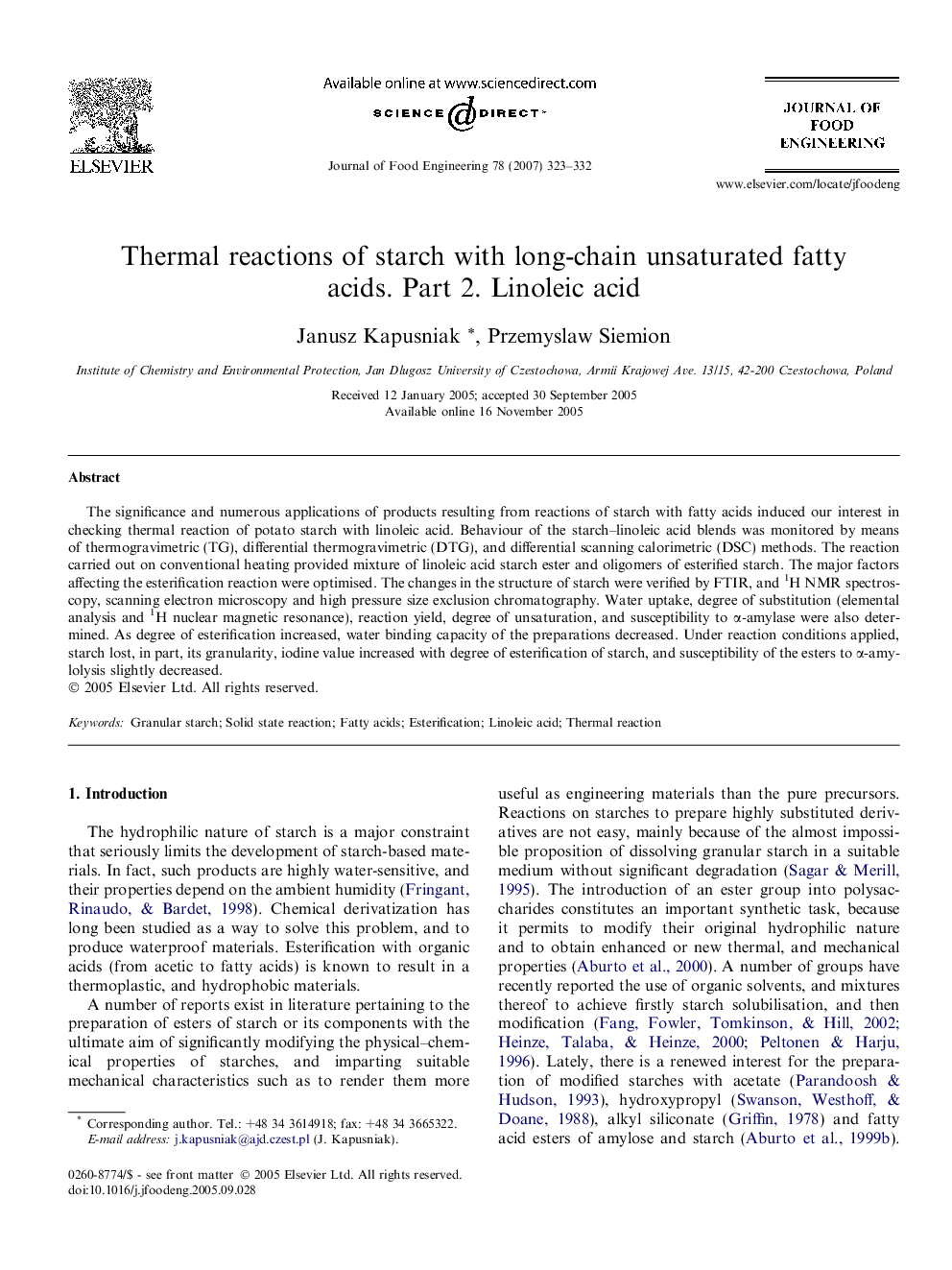| Article ID | Journal | Published Year | Pages | File Type |
|---|---|---|---|---|
| 226186 | Journal of Food Engineering | 2007 | 10 Pages |
The significance and numerous applications of products resulting from reactions of starch with fatty acids induced our interest in checking thermal reaction of potato starch with linoleic acid. Behaviour of the starch–linoleic acid blends was monitored by means of thermogravimetric (TG), differential thermogravimetric (DTG), and differential scanning calorimetric (DSC) methods. The reaction carried out on conventional heating provided mixture of linoleic acid starch ester and oligomers of esterified starch. The major factors affecting the esterification reaction were optimised. The changes in the structure of starch were verified by FTIR, and 1H NMR spectroscopy, scanning electron microscopy and high pressure size exclusion chromatography. Water uptake, degree of substitution (elemental analysis and 1H nuclear magnetic resonance), reaction yield, degree of unsaturation, and susceptibility to α-amylase were also determined. As degree of esterification increased, water binding capacity of the preparations decreased. Under reaction conditions applied, starch lost, in part, its granularity, iodine value increased with degree of esterification of starch, and susceptibility of the esters to α-amylolysis slightly decreased.
